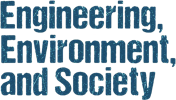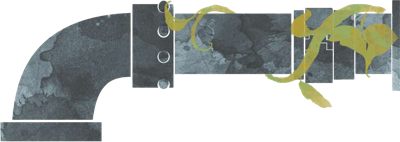

The Watershed Project and other local partners recently collaborated to design shoreline adaptation and multi-benefit infrastructure around the North Richmond wastewater treatment plant. San Francisco Bay Restoration Authority is working on the current design, which will include a horizontal levee to protect the plant from rising sea levels and new landscape designs to make the beach area more accessible for community members. Students created community outreach materials on the proposed North Richmond shoreline adaptation project. They compiled an annotated bibliography focused on three topics: history of environmental justice in Richmond, current shoreline adaptation technology, and socioeconomic implications of levees. This research informed a series of ten interviews with technical experts and community members, which they used to make an informational video on the living levee project.
Richmond’s “Iron Triangle” neighborhood, composed primarily of African American (49%) and Latino (37%) residents, has faced a long history of urban decay. The southern border of the “triangle” was line by the Santa Fe Railroad tracks that were removed in 1994, leaving a 3-mile stretch of greenway with 32 acres of open space. In the areas around the greenway, numerous stormwater infrastructure challenges exist, including point and nonpoint pollution sources, localized stormwater flooding, and an incompletely mapped storm drain system. The Watershed Project has been working in this area to develop various stormwater infrastructure projects, including bioswales and bioretention basins, to both address the pressing stormwater issues and improve the aesthetics of the mostly-barren Richmond Greenway.
This project will focus on the design and implementation of educational materials about bioswales for high school aged students. Students will design, construct, and implement an interactive, cost-effective, easy-to-reproduce, and easy-to-transport “design challenge” for high school students to learn more about key concepts for bioswales and green infrastructure. The learning objectives for the design challenge will be based on the Spring 2016 E157AC education materials. Students can update the workbook around their interactive design challenge. Students will have the opportunity to implement and test their learning model at Earth Day events in April.